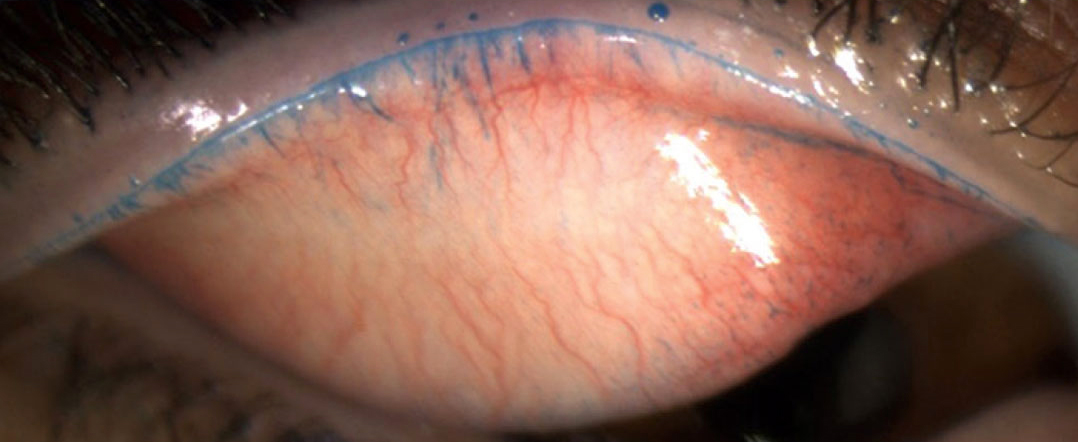 |
| Contact lens wearers have unique lid wiper microvascular responses. Photo: Chris Lievens, OD. Click image to enlarge. |
Contact lens dropout is mainly due to discomfort, which typically results from the interaction between the lens and the ocular surface. Previous studies of bulbar and limbal conjunctival hyperemia and lid wiper epitheliopathy (LWE) have shown an association with contact lens discomfort as well. The goal of this recent study was to determine the relationship between ocular vascular response, contact lens discomfort and lens fitting characteristics after one day of contact lens adaptation by neophytes. The researchers found that lid wiper microvascular responses are distinctive vasculopathies in contact lens wearers and relate to contact lens discomfort.
Forty-nine participants without a history of contact lens use were included in this study. A contact lens was fitted on the right eye, and imaging was taken at baseline and after six hours of lens wear. Functional slit lamp biomicroscopy was used to image the microvascular network of the upper tarsal conjunctiva, lid wiper and bulbar conjunctiva, and vessel density was measured using custom software. Ultrahigh-resolution OCT was used to image the lens edge and fitting characteristics, including lens movement and lens-induced conjunctival indentation, and ocular comfort was rated using a 50-point visual analog scale.
The change in visual analog scale comfort score was negatively related to vessel density of the lid wiper and bulbar conjunctiva, but positively related to change in vessel density of the tarsal conjunctiva. The change in ocular microvasculature was not related to the objective metrics of the lens-fitting characteristics. Similarly, the change in comfort score was not related to the objective metrics of the lens-fitting characteristics. Duration of lens wear was also a factor in ocular comfort.
“The key findings were validation of the relationship between ocular comfort and vascular responses in the lid wiper and bulbar conjunctiva and non-establishment of the relationship between lens-fitting characteristics and ocular vascular responses in the short period of lens wear,” the team explained in their publication of the results. “The decreased vessel density in response to the lens wear may indicate the protective effect of the lens, possibly acting as a bandage lens.”
The team noted that their discovery may shine a light on the possibility of using a contact lens to facilitate the recovery of LWE. They suggested further studies are needed to test the hypothesis that lid wiper vasculopathy can be manipulated by fitting contact lenses with the least possible friction to promote ocular comfort.
Jiang H, Fang M, Franklin R, et al. Associations between lid wipe microvascular responses, lens fit and comfort after one day of contact lens adaptation by neophytes. Eye Contact Lens. May 17, 2022. [Epub ahead of print]. |

